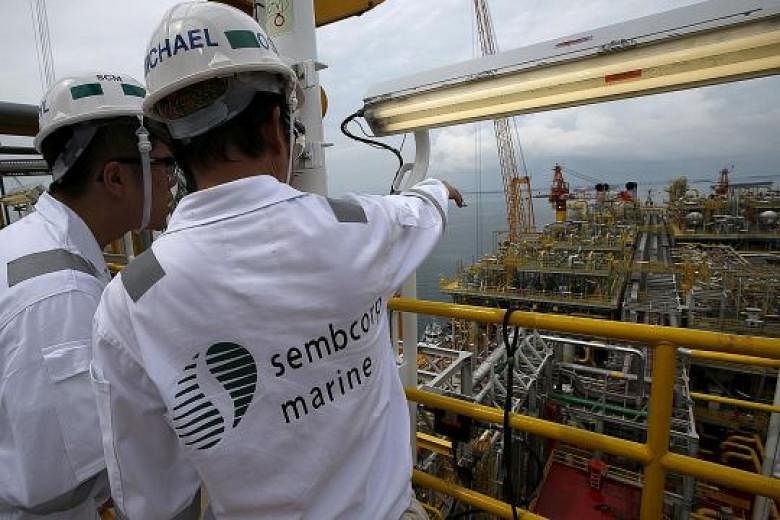Singapore can stay a major player in the global marine and offshore engineering industry despite the recent downturn in the sector.
That was the key message from an industry transformation road map drawn up by a mutli-agency team led by the Economic Development Board (EDB).
It is aimed at generating about $5.8 billion of value-add and creating 1,500 jobs by 2025.
Mr S. Iswaran, the Minister for Trade and Industry (Industry), told a launch ceremony yesterday that Singapore is still drawing a significant economic contribution from the industry despite severe headwinds from a multi-year downturn.
The sector accounted for $3.6 billion, or 1 per cent of Singapore's gross domestic product, and employed more than 23,000 locals in 2016.
The industry has also grown from its humble beginnings of just four domestic marine firms to one anchored by home-grown giants such as Keppel Offshore & Marine and Sembcorp Marine, and backed by more than 1,000 small and medium-sized enterprises.
Mr Iswaran acknowledged that the past three years have been "difficult" for the industry, and that while recovery is in sight with crude prices stabilising above US$60 of late, oil companies are still cautious.
-
23,000
Number of locals employed by the marine and offshore engineering sector in 2016.
At the same time, companies have had to battle a liquidity crunch, though the Government has stepped in with two schemes - Spring Singapore's Bridging Loan and IE Singapore's enhanced Internationalisation Finance Scheme. These have catalysed nearly $700 million in loans to more than 100 borrowers, and have been extended until November.
The issue at hand for the industry now is how to thrive, and not just survive.
The key to ensuring that it continues to stay ahead of the pack lies in diversification into new growth areas as traditional core businesses such as rig-building can no longer anchor its revenue stream.
The transformation road map has identified the liquefied natural gas (LNG) and offshore renewables as two new growth areas.
Mr Iswaran said global expenditure on LNG is projected to exceed US$280 million (S$369 million) by 2021, while the global offshore wind market is expected to surge past US$130 billion by 2023.
He noted that Keppel and SembMarine have already ventured into the LNG segment.
There is also a pressing need for smaller firms to build up their capabilities so that they can benefit from these trends. This is where government agencies like IE Singapore can play a bigger role by connecting companies with stakeholders and resources, as well as supporting business partnerships with companies in overseas markets.
Mr Iswaran also urged the industry to embrace digitalisation and tap the promise that data analytics and artificial intelligence could bring to improving operational efficiency and even generating new revenue streams.
The Government has invested $107 million to set up the Technology Centre for Offshore and Marine Singapore to integrate public research and industry expertise to develop innovative concepts and infrastructure for marine and offshore operations.
As the industry transforms, so must the workforce.
Four agencies - SkillsFuture Singapore (SSG), Workforce Singapore (WSG), EDB and Spring Singapore - have launched the Skills Framework for Marine and Offshore, which charts out seven career tracks.
WSG has also rolled out three Professional Conversion Programmes to help professionals, managers, executives and technicians who are entering the industry or taking on different job scopes.
With the support of the Association of Singapore Marine Industries as the programme manager, WSG has already helped reskill more than 300 mid-career professionals.


